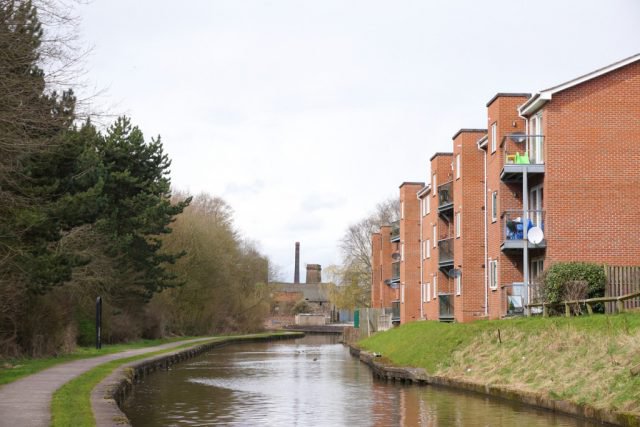Online estate agent eMoov.co.uk has released its National Demand Index for the second quarter (Q2) of the year, assessing which parts of the UK are currently seeing the largest and lowest spikes in property demand, as well as the greatest fluctuations since the previous quarter.
The property demand percentage indicates where is currently the hottest spot. However, it does not necessarily mean that this is the area with the largest growth since the previous quarter. Often, sustained levels of high demand can lead to inflation in house prices and a decline in demand on the previous quarter.
The National Demand Index looks at the balance between the supply and demand of housing stock in a given area, and attributes a percentage score based on the level of stock available on major property portals compared to that which has already sold.
UK
Across the UK as a whole, property demand has risen by 4.54% on Q1, now standing at 36.07% overall. Wales has seen the greatest increase, of 12.33%, although current demand is still the lowest of all four nations, at 30.72%. Scotland is the only nation to record a fall in demand in Q2, down by 3.04% to 36.21%. England experienced the second largest pickup in demand, of 4.91%.
The 150 most populated towns and cities
The most populated towns and cities have seen increases over the past quarter, with demand up by 1.32%, from 43.19% to 43.77%.
The hottest
Topping the list for hottest demand is Warwickshire’s Rugby, at 70.76%. Rugby is closely trailed by Portsmouth (65.76%), Solihull (64.15%), Bristol (64.06%) and Colchester (61.68%).
Biggest jumps
Wigan enjoyed the greatest climb since Q1, with an increase of 67.60%, taking demand to 37.06% in Q2. Tynemouth placed second, with a 54.75% jump to 43.75%. The next three highest increases were seen in Basingstoke (32.96%), Canterbury (24.21%) and Newport in Wales (24.16%).
The coldest
Meanwhile, the UK’s coldest spot is still Aberdeen, with an 11.07% demand level. Hartlepool follows, with demand at 16.63%, while Darlington, Middlesbrough and Bradford complete the top five coldest locations for property demand, at 18.86%, 19.13% and 20.57% respectively.
Biggest drops
The greatest fall was felt in Chester, by 23.12%, down from 41.25% in Q1 to 31.71% in Q2. Gillingham in Kent saw demand drop by 17.88% to 51.61%, while Harrogate (16.05%), East Kilbride (15.85%) and Slough (15.16%) also endured some of the largest declines of the quarter.
The Founder and CEO of eMoov, Russell Quirk, says: “A slight decrease in demand across the major towns and cities of the UK during Q2 echoes reports by other price-based industry sources that the market is slowing down a touch. Although demand has fallen marginally, there is still an abundance of buyer interest across the nation in the more affordable markets and, overall, the UK property sector has been ticking along fairly well given the turbulent year it has had.”

eMoov Releases its National Demand Index for Q2 2017
London
Over Q2, the capital saw a 1.62% increase in property demand compared with Q1, at 32.46%.
The hottest
Bexley remains the most in demand London borough, at 58.14%, followed by Newham (53.34%), Sutton (52.09%), Havering (48.46%), and Barking and Dagenham (46.34%).
Biggest jumps
However, Greenwich experienced an incredible 83.42% surge in property demand on Q1. Lambeth (58.53%), Southwark (58.34%), Kingston-upon-Thames (25.92%) and Ealing (7.56%) have also recorded some of the largest increases since the start of the year.
The coldest
The majority of the capital’s coldest boroughs for property demand are located in prime central London. The City of Westminster currently has the lowest demand, at 10.41%, followed by Kensington and Chelsea (10.51%), Hammersmith & Fulham (13.19%), Camden (16.09%) and the City of London (16.16%).
Biggest drops
The City of London saw the largest decrease between Q1 and Q2, of 20.13%. Similarly, the trendy borough of Hackney saw demand drop by 18.85%, followed by Lewisham (13.94%), Wandsworth (13.61%) and Hounslow (12.56%).
Quirk comments: “An increase in demand across the capital may come as a surprise to some, but a cooling market in London where price is concerned will always bring opportunistic and aspiring buyers out of the woodwork in search of a good investment.
“This latest data further demonstrates the multifaceted property market in London, as overall demand is driven by the more affordable peripheral boroughs, dragging the over-inflated boroughs along with them by their ear.”
England
Property demand across England has also enjoyed a slight uplift in Q2, up by 4.91% to 41.26%.
The hottest
East Sussex leads England as the hottest county for property demand, at 63.44%. The City of Bristol is close behind, at 56.14%, followed by Northamptonshire (54.57%), Suffolk (53.08%) and Hampshire (51.84%).
Biggest jumps
Hampshire recorded the most significant climb in Q2, up by 58.25%. East Sussex is not only the hottest county, but has also seen the second largest spike in demand, up by 42.37%. In third place is Surrey (42.10%), followed by the Isle of Wight (41.70%) and Devon (18.42%).
The coldest
County Durham continues to record low levels of property demand, at 21.17%, followed by Cumbria (26.32%), Lancashire (27.88%), Tyne and Wear (28.99%) and Northumberland (29.37%).
Biggest drops
Some of the current coldest spots are also some of the areas to have experienced the most significant decreases since Q1. Lancashire saw the greatest drop, of 26.29%, along with Northumberland (21.09%), County Durham (6.93%), Bedfordshire (3.77%) and Northamptonshire (2.91%).
Quirk explains: “There are always areas across England that perform consistently well and those that don’t, but it is the swings in demand across the nation that provide the most interesting insight into where UK buyers are searching for property. Despite the higher price of property, the more southern counties seem to be increasing in demand; perhaps as previous low demand levels have reduced the price a touch, whereas the previously more popular counties to the north have suffered a decline.
“Bristol seems to consistently rank as a top area for buyer demand, which is good news for homeowners in the area, but, on the flipside, those in County Durham won’t be as happy, having seen prolonged degrees of weak demand.”
Wales
Property demand in Wales jumped by 12.33% over the past quarter – the housing market in the country is clearly on the up after a tough few years and is performing better than anywhere else in the UK.
The hottest
Q2 figures show that Newport is the hottest spot in Wales, with demand at 51.72%. Caerphilly is a close second, at 48.29%, followed by Cardiff (45.83%), Monmouthshire (41.56%) and the Vale of Glamorgan (40.99%).
Biggest jumps
Ceredigion experienced the greatest climb in Wales from Q1 to Q2, of 27.52%. Conwy (21.34%), the Isle of Anglesey (16.88%), Carmarthenshire (14.63%) and Denbighshire (13.70%) also enjoyed some of the largest rises of Q2.
The coldest
Denbighshire (15.19%), Pembrokeshire (16.68%), Gwynedd (18.86%), Ceredigion (20.09%) and Powys (20.46%) are the coldest spots for property demand in Wales.
Biggest drops
The largest falls in demand were recorded in Wrexham (6.49%), Bridgend (3.67%), Torfaen (2.47%) and Powys (2.09%).
Quirk responds to the figures: “The Welsh property market’s growth rate is well ahead of the rest of the UK in the last quarter, as demonstrated by the latest industry data, which shows promise in renewing the nation’s property market and the wider economy.
“Although the industrial landscape may have all but vanished, Wales is evolving as a country, and its major cities have become go-to destinations for tourism, education and business. Not only is the nation on the up regarding its appeal, but it also has some of the most affordable property in the UK, which is a driving factor behind the high demand currently seen in the Welsh property market.”
Scotland
Demand across Scotland as a whole has dropped by 3.04% on Q1, now standing at 36.21%.
The hottest
Demand in the City of Edinburgh is the hottest in the country, at 58.26%. A tight race remains between East Renfrewshire (56.83%), the City of Glasgow (55.46%), West Lothian (54.50%) and Falkirk (50.19%).
Biggest jumps
Stirling saw the largest climb over the past quarter, up by 18.89% to 46.65%, followed by East Dunbartonshire (16.01%), East Lothian (13.01%), Midlothian (10.73%) and the Highlands (8.32%).
The coldest
On the other side of the spectrum, the top five coldest spots are: Aberdeenshire (11.25%), the City of Aberdeen (11.76%), Angus (16.20%), Dumfries and Galloway (19.09%) and the Western Isles (22.55%).
Biggest drops
The most significant decline was recorded in South Ayrshire, with a drop of 53.71%, taking property demand to 31.09%. The Orkney Islands saw the second largest decrease (38.09%), followed by Angus (21.88%), the City of Aberdeen (16.61%) and the City of Dundee (9.78%).
Quirk comments: “Uncertainty has plagued the UK’s housing market, specifically in Scotland, because of political instability, first as a result of the Brexit vote last year and then through a renewed campaign of an independent Scotland. However, there are signs that the market will persevere, with many of the nation’s major cities, such as Edinburgh, Stirling and Glasgow, growing in demand and will likely keep the Scottish market afloat.”






